#urraca x alfonso
Note
If you don’t mind, could you give some tv show recs with canon incest?
Sure! I will recommend only what I have watched myself.
Starting with the most popular, House of the dragon. Although I can't say that Daemon and Rhaenyra's couple is my favorite, the show as a whole is good and full of consanguineous couples. (I'm not talking about Game of thrones because I haven't finished it, but I think you know about it).

No less popular, The Borgias (Showtime). It was a starting point for my incest fetish xD I started watching not knowing anything about the Borgia family or that there would be incest in the series, but I shipped Cesare and Lucrezia from the very first episode.

The second season of Elite features a hot pair of half-siblings.

Speaking of less popular shows, we have Another period. This is a pretty peculiar show, but if you like trash comedies, then it will be an ideal option. A canonical twincest couple, they are adorable.

A taste of honey. A very good thing about a couple of uncle and niece. Japanese drama.

Hope it was useful information for you, Anon! :)
UPD. It wasn't mentioned because I forgot about it, but I'm adding it now. El Cid. The chemistry between Alfonso and Urraca is unreal and they are comparable to Cesare/Lucrezia.

#asks#a: mine#r: unnie#r: brosis#hotd#house of the dragon#daemon x rhaenyra#the borgias#cesare x lucrezia#elite#valerio x lucrecia#another period#frederick x beatrice#a taste of honey#masato x naoko#tw:incest#canon: yes#shipcest#el cid#alfonso x urraca#a song of ice and fire#fire and blood
105 notes
·
View notes
Text
Today's problematic ship is Urraca and Alfonso from El Cid (2020)
Brother/sister incest
Requested by me


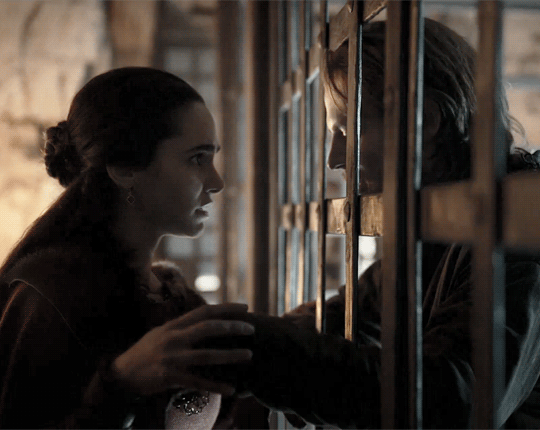
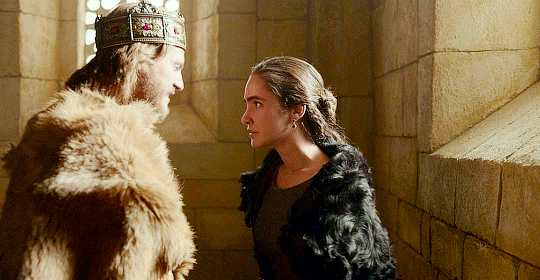
#comship#proship#proship please interact#proshippers please interact#proshipper safe#shipcest#sibcest#alfonso x urraca#el cid
11 notes
·
View notes
Text

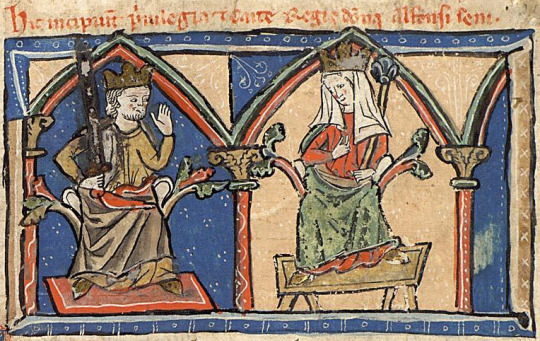




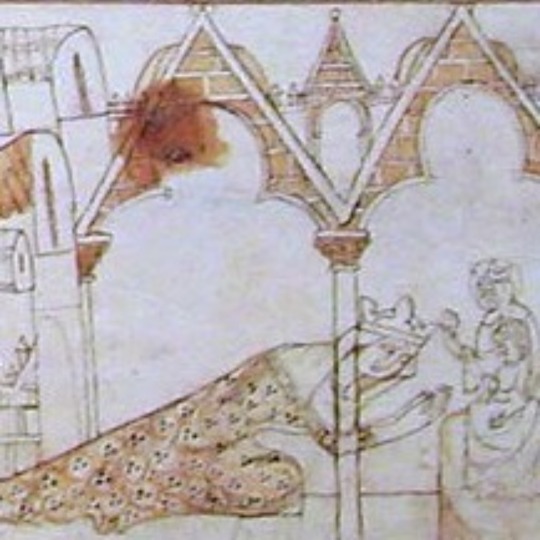

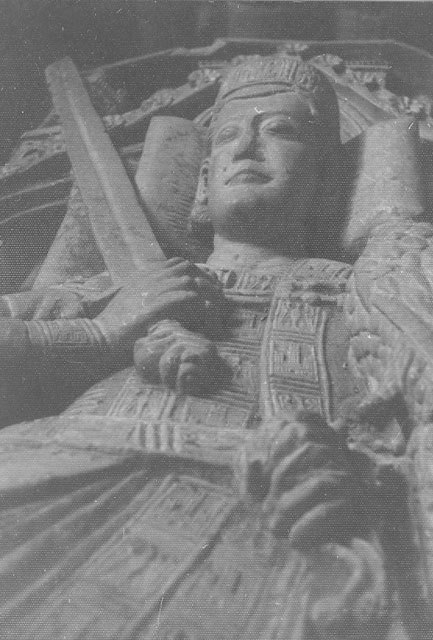

The Bastard Kings and their families
This is series of posts are complementary to this historical parallels post from the JON SNOW FORTNIGHT EVENT, and it's purpouse to discover the lives of medieval bastard kings, and the following posts are meant to collect portraits of those kings and their close relatives.
In many cases it's difficult to find contemporary art of their period, so some of the portrayals are subsequent.
1) Ferdinand III of Castile (1199/1201 – 1252), son of Alfonso IX of Leon and his wife Berenguela I of Castile
2) Alfonso IX of Leon (1171 – 1230), son of Ferdinand II of Leon and his wife Urraca of Portugal; with Berenguela I of Castile (1179/ 1180 – 1246), daughter of Alfonso VIII of Castile and his wife Eleanor of England
3) Blanche of Castile (1188 – 1252), daughter of Alfonso VIII of Castile and his wife Eleanor of England
4) Henry I of Castile (1204– 6 June 1217), son of Alfonso VIII of Castile and his wife Eleanor of England
5) Urraca of Castile (1186/ 1187 – 1220), daughter of Alfonso VIII of Castile and his wife Eleanor of England
6) Ferdinand of Leon (ca. 1192 – 1214), son of Alfonso IX of Leon and his wife Theresa of Portugal
7) Elisabeth of Swabia (1205 – 1235), daughter of Philip of Swabia and Irene Angelina
8) Alfonso X of Castile (1221 – 1284), son of Ferdinand III of Castile and his wife Elisabeth of Swabia
9) Philip of Castile (1231- 1274), son of Ferdinand III of Castile and his wife Elisabeth of Swabia
10) Eleanor of Castile (1241- 1290) daughter of Ferdinand III of Castile and his wife Joan of Ponthieu: with Edward I of England ( 1239 – 1307), son of Henry III of England and his wife Eleanor of Provence
Note: The marriage of Alfonso IX's parents got also annulled/declared void due to consanguinity, but I didn't include him on the list because this example is already present in Ferdinand III & IV
#jonsnowfortnightevent2023#canonjonsnow#asoiaf#a song of ice and fire#day 10#echoes of the past#historical parallels#medival bastard kings#bastard kings and their families#ferdinand iii of castile#alfonso ix of leon#berenguela i of castile#blanche of castile#henry i of castile#ferdinand of leon#urraca of castile#alfonso x of castile#philip of castile#eleanor of castile#edward i of england
4 notes
·
View notes
Text
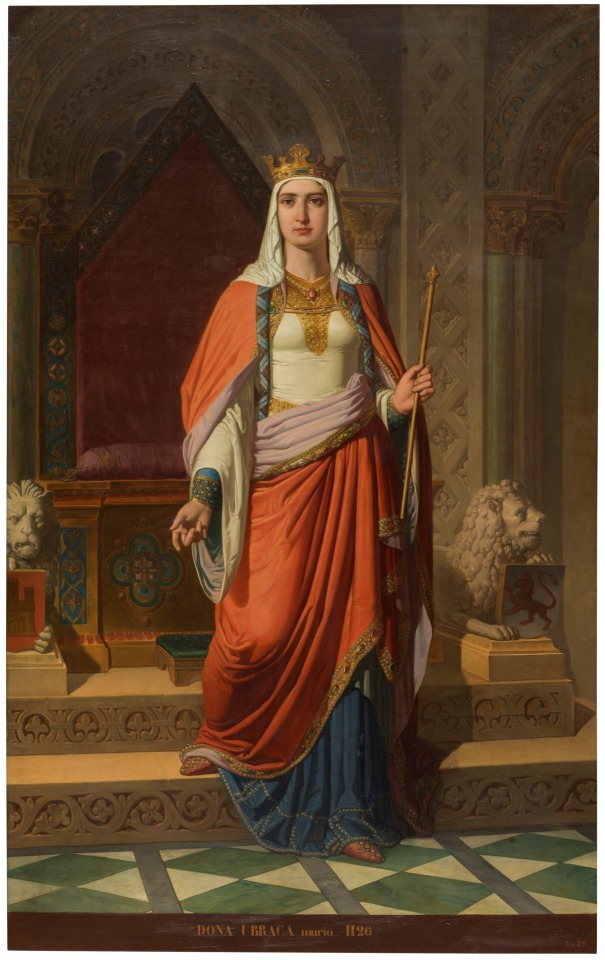
Carlos Múgica y Pérez
Doña Urraca, 1857
Óleo sobre lienzo, 222,4 x 138,5 cm
Reina de Castilla y León (1109-1126). Sucedió a Alfonso VI y precedió a Alfonso VII.
En el lienzo, la reina desciende del trono flanqueado por leones y camina hacia el espectador. Viste cuerpo blanco ceñido y falda azul apenas visible bajo el manto rojo; sobre la cabeza cubierta porta la corona y el cetro con su mano izquierda.
📍 Congreso de los Diputados, Madrid, Spain.
0 notes
Photo



Urraca & Alfonso being soft
#El Cid#urraca x alfonso#Urraca de Zamora#Alfonso#Urralfon#2x05#my edit#These two will kill me#they are so cute#the way they hold hands <3
54 notes
·
View notes
Text
Thicker Than Water



tags // haruchiyo sanzu x f!reader, ran haitani x f!reader, historical!au, dark content (incest), smut, manipulation, grooming, morally grey characters, inspired by the tv series El Cid, scheming, fight for a throne, period-typical sexism, takeomi akashi, senju akashi, manjiro “mikey” sano, ran haitani, others
note // after binging tokyo revengers and watching a couple alfonso x urraca edits, i couldn’t resist writing a super indulgent fic combining the two with a heavy dose of dc. this will have multiple parts
extras // playlist

Synopsis
After the surprising death of the Akashi king, your older brother, Takeomi, takes the throne while you plot his downfall to make your beloved brother, Haruchiyo, a puppet king, with you pulling the strings. Unfortunately, Takeomi isn’t willing to go down without a fight and Haruchiyo’s actions make you wonder who truly has the control in your twisted relationship.

Parts
PART 01 // SUCCESSION
PART 02 // ALLIANCES
PART 03 // COMING SOON
ONGOING

#tokyo revengers x reader#tr x reader#tokyorev x reader#sanzu x reader#ran x reader#haruchiyo sanzu x reader#ran haitani x reader#sanzu x you#ran x you#sanzu haruchiyo#ran haitani#akashi takeomi#akashi senju#mikey x senju#manjiro sano#yuzuha shiba#ken ryuguji#yasuhiro muto#emma sano#tw:incest#tokyo revengers smut#tokyorev smut#tr smut#tokyo revengers fanfiction#tokyorev fanfiction#ongoing fic#historical au
167 notes
·
View notes
Photo



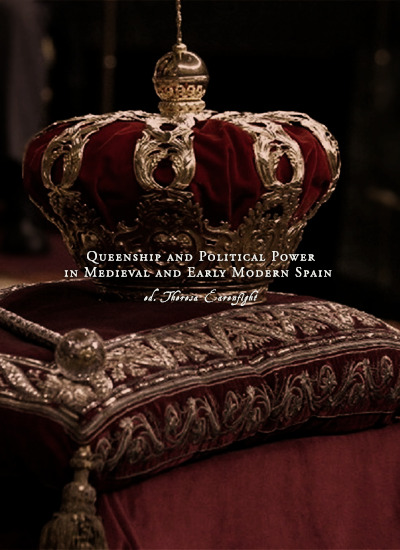
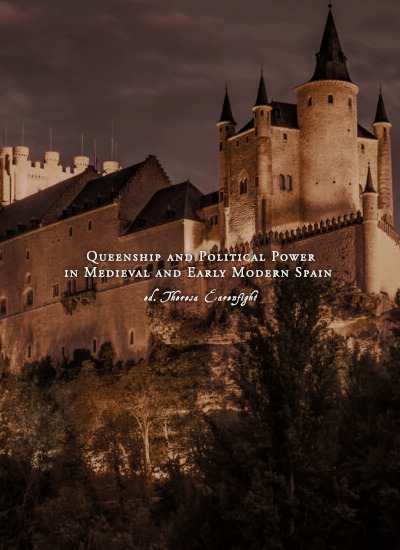
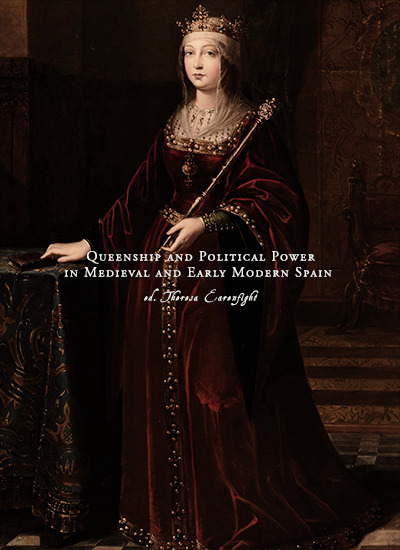
Favorite History Books || Queenship and Political Power in Medieval and Early Modern Spain edited by Theresa Earenfight ★★★★☆
For example, Mark Meyerson describes the importance of Elionor of Sicily to the tumultuous reign of Pere III of the Crown of Aragon (1336-87) in fostering, and in some cases defending, their Jewish subjects in Morvedre, a town located in the kingdom of Valencia. Marta Van Landingham describes the relationship between Violant of Hungary and Jaume I of the Crown of Aragon (1213-76) as both an exemplary marriage and a superb political partnership. Jaume claims publicly to make no final decisions without first consulting Violant, his second wife whom he takes pains to present as an improvement over his first wife. Violant possesses all the characteristics that Alfonso specified, but what Violant has, and that Alfonso did not think to mention, is brains. She is not only intelligent, she is savvy in many ways— shrewd, patient, courageous in speaking her mind, and very much involved in military affairs. This is a significant but unusual place to find a queen— with the exception of Urraca of Leon-Castile and Isabel of Castile, military affairs were off-limits for late medieval and early modern queens. Unlike most medieval kings, Jaume gives us a rare glimpse of a queen who, although a “junior partner”, is nevertheless a genuine partner who typifies the ways in which, in the absence of prohibitions, queens simply stepped into the political arena.
At the other extreme, Marie of Montpellier exemplifies what Elizabeth Haluska-Rausch describes as an “unsuccessful” partnership, an appearance of a partnership which was in fact, a failure on all levels. Marie of Montpellier brought an impressive dowry, substantial personal wealth, and formidable family connections to her marriage to Pere II of the Crown of Aragon (1196-1213). These assets should have positioned her well for a role in the governance of the realm, but instead they became a site of conflict rather than a source of power. And Pere was a bully, unwilling to accept anyone, least of all his wife, as sharing in any aspect of his sovereignty. She was a “silent” partner, the financial backer whose wealth and family connections enabled Pere to wage war and opened the door to Aragonese influence north of the Pyrenees, setting the stage for the conquests of their son, Jaume I (1213-76).
We are fortunate to have two important perspectives on queens and their political role in monarchy from medieval kings themselves— a proscriptive view from Alfonso X of Castile (1252-84) in the Siete Partidas and the Especulo, and a descriptive one from Jaume II of Aragon in the Llibre dels Feyts. What does a queen bring to this partnership? As Joseph O’Callaghan clearly demonstrates, when Alfonso emphasized the “harmonious” union of a king and queen, he meant more than just the reciprocity of the marriage relationship and the ways in which one partner makes the other better. He also meant the ways in which both king and queen share their responsibilities in both the public and private realms. Alfonso enumerates four things that a king should look for in a partner: money, character, physical attributes, and good lineage. The possession of money can cut both ways, as the case of Marie of Montpellier makes clear. Character, meaning personality, intelligence, diplomatic skills, tact, shrewdness, wits, and even tenacity, is harder to measure and yet it may well be the determining factor in the success or failure of a monarchical partnership. Marie of Montpellier comes across as particularly passive and weak while Violant of Hungary, Elionor of Sicily, Maria de Luna, and certainly Isabel of Castile and Isabel of Portugal were endowed with formidable personal traits and were well matched to their equally formidable husbands.
#historyedit#litedit#queenship and political power in medieval and early modern spain#spanish history#european history#medieval music#women's history#history#history books#nanshe's graphics
103 notes
·
View notes
Photo


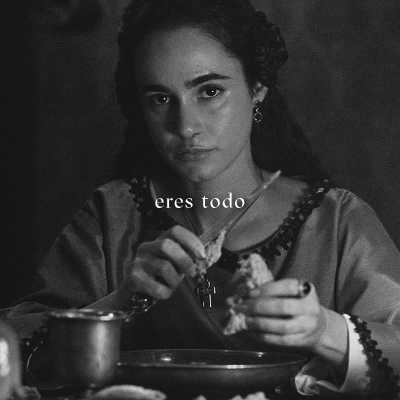

You're no longer a child. You're a true prince.
El Cid (2020–): Alfonso VI de León x Urraca de Zamora
#El Cid#El Cid 2020#El Cid Amazon Prime#Spanish cinema#Spanish TV#period drama#Alfonso VI de León#Urraca de Zamora#Alfonso VI of León#Alfonso VI of Leon#Urraca of Zamora#Jaime Olías#Jaime Olias#Alicia Sanz#fanart#my gifs#yes I love this quote#El final del camino looks like a horribly cheap show#(not in budget alone)#so I probably won't even try to watch it#Toledo's much the same#(watched it before though - and hated the characters heh)#but together with El Cid they show an evolution of sorts#also you know what makes El Cid different?#characters actually believe their causes to be good or even just#it's not just random struggles for power between greedy maniacs#self-reflection is there however imperfect
32 notes
·
View notes
Photo



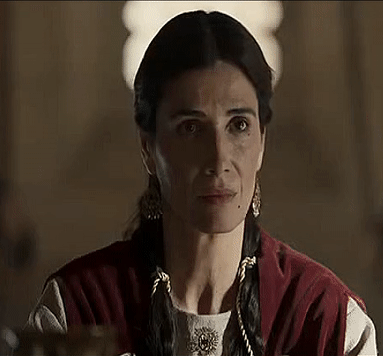

Sancha I of León (c. 1018 – 1067)
Sancha was daughter of King Alfonso V of León by his first wife, Elvira Mendes. Her mother died when she was a child. Sancha became a secular abbess of the Monastery of San Juan and San Pelayo in the city of León. In 1028, her father was killed by an arrow while besieging the Muslim town of Viseu. Her eleven-year-old brother ascended the throne with the name Bermudo III. In 1029, a political marriage was arranged between her and count García Sánchez of Castile. The count was murdered by the Velas, a party of Castilian nobles exiled from their own country, as he was entering the church of John the Baptist in León, where he had gone to marry Sancha. The countship of Castile was assigned to García’s nephew Fernando, younger son of his sister Muniadona and her husband King Sancho III the Great of Pamplona.
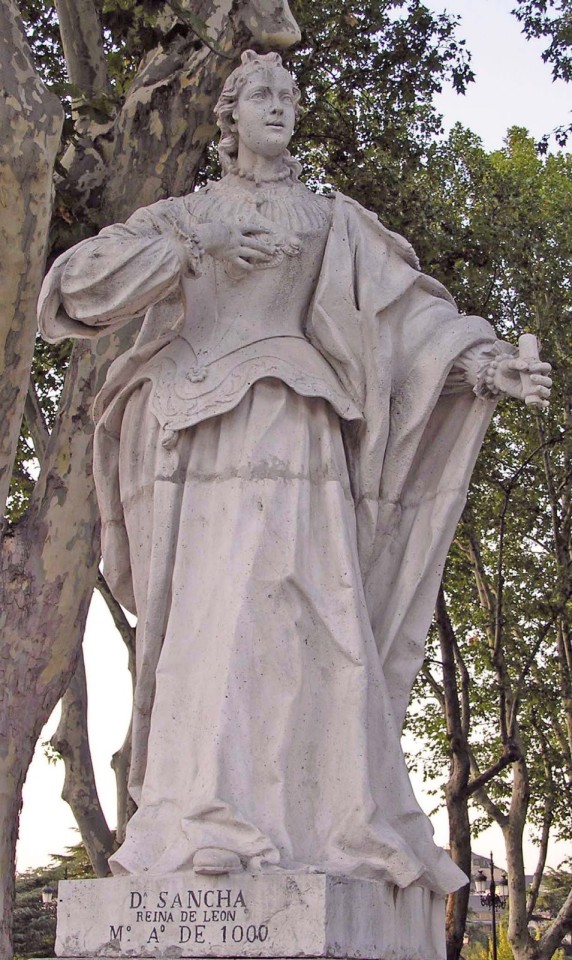
Sancho III arranged for Fernando to marry Sancha of León in 1032. The lands between the Cea and Pisuerga rivers went to Castile as her dowry. Fernando defeated and killed his brother-in-law Bermudo III at the Battle of Tamarón in 1037. Sancha thereby became queen. Fernando took possession of León by right of his wife, and months later he had himself crowned and anointed king in León. She was regarded by her subjects as a pious and active woman. Sancha helped her husband to govern, always distinguishing herself for her prudence and perspicacity into the complications of war.
During the first sixteen years of the reign, Fernando and Sancha had to pacify the Kingdom of León, subdue the rebellious counts and reorganize the Church. They traveled the territories of their kingdoms always together, the documents were drawn up in the name of both monarchs, and together they signed them. While King Fernando fought the Muslims on all fronts, Queen Sancha procured horses, weapons and munitions necessary for the war. The royal couple had five children.
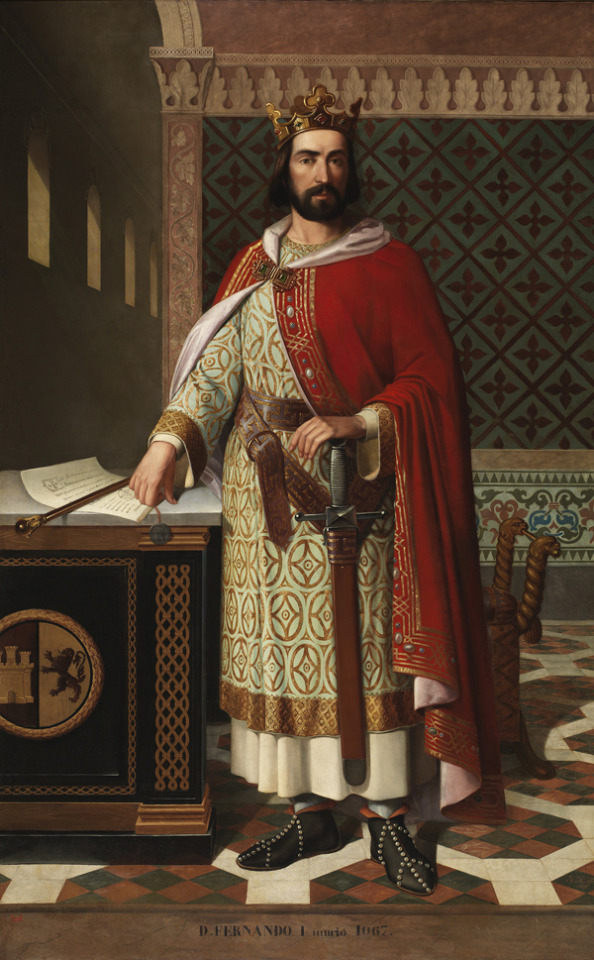
After becoming ill during the Siege of Valencia and the Battle of Paterna, King Fernando died on 24 December 1065, in León. By his will, the king divided his kingdom among his three sons: the eldest, Sancho, received Castile; the second, Alfonso, León; and from the latter the region of Galicia was carved off to create a separate state for García. Fernando's two daughters each received cities: Elvira that of Toro and Urraca that of Zamora. Following the death of her husband, Queen Sancha is said to have played the futile role of peacemaker among her sons. She retired to a monastery, where she had been abbess in her adolescence, and died in the city of León on 8 November 1067. The queen was interred in the Royal Pantheon of the Basilica of San Isidoro, along with her parents, brother, husband, and her children Elvira, Urraca and García. The following Latin inscription was carved in the tomb in which were deposited the remains.
"H. R. SANCIA REGINA TOTIUS HISPANIAE, MAGNI REGIS FERDINANDI UXOR. FILIA REGIS ADEFONSI, QUI POPULAVIT LEGIONEM POS DESTRUCTIONEM ALMANZOR. OBIIT ERA MCVIII. III N. M."
Elia Galera played the role of Queen Sancha of Leon in “El Cid” (2020)
(x)(x)(x)
#Sancha I of León#Ferdinand I of León#Women in history#Spanish history#Queens of León#Sancha de León#Fernando I de León
93 notes
·
View notes
Text
2nd King of Portugal and of the Burgundy Dynasty: King Sancho I of Portugal, "The Populator"

Reign: 6 December 1185 – 26 March 1211
Coronation: 9 December 1185
Predecessor: Afonso I
Sancho I (nicknamed "the Populator" ("o Povoador"), King of Portugal (Coimbra, 11 November 1154 – 26 March 1211) was the second but only surviving legitimate son and fifth child of Afonso I of Portugal by his wife, Mafalda of Savoy. Sancho succeeded his father and was crowned in Coimbra when he was 31 years old on 9 December 1185. He used the title King of Silves from 1189 until he lost the territory to Almohad control in 1191.
Sancho was baptized with the name Martinho since he was born on the feast day of Saint Martin of Tours. On 15 August 1170, he was knighted by his father, King Afonso I, and from then on he became his second in command, both administratively and militarily. At this time, the independence of Portugal (declared in 1139) was not firmly established. The kings of León and Castile were trying to re-annex the country and the Roman Catholic Church was late in giving its blessing and approval. Due to this situation Afonso I had to search for allies within the Iberian Peninsula. Portugal made an alliance with the Crown of Aragon and together they fought Castile and León. To secure the agreement, Sancho married Dulce, younger sister of King Alfonso II of Aragon, in 1174. Aragon was thus the first Iberian kingdom to recognize the independence of Portugal.

With the death of Afonso I in 1185, Sancho I became the second king of Portugal. Coimbra was the center of his kingdom; Sancho terminated the exhausting and generally pointless wars against his neighbours for control of the Galician borderlands. Instead, he turned all his attentions to the south, towards the Moorish small kingdoms (called taifas) that still thrived. With Crusader help he took Silves in 1188. Silves was an important city of the South, an administrative and commercial town with population estimates around 20,000 people. Sancho ordered the fortification of the city and built a castle which is today an important monument of Portuguese heritage. At the time he also styled himself "By the Grace of God, King of Portugal and Silves (Dei Gratiæ, Rex Portugalliæ et Silbis). However, military attention soon had to be turned again to the North, where León and Castile threatened again the Portuguese borders. Silves was again lost to the Moors in 1191.

Sancho I dedicated much of his reign to political and administrative organization of the new kingdom. He accumulated a national treasure, supported new industries and the middle class of merchants. Moreover, he created several new towns and villages (like Guarda in 1199)

and took great care in populating remote areas in the northern Christian regions of Portugal – hence the nickname "the Populator". The king was also known for his love of knowledge and literature. Sancho I wrote several books of poems and used the royal treasure to send Portuguese students to European universities.

He died in Coimbra, aged 56.

Sancho married Dulce of Aragon, daughter of Ramon Berenguer IV, Count of Barcelona and Petronilla, Queen of Aragon. Eleven children were born from this marriage, nine of whom reached adulthood:
Teresa (1175/1176 – 18 June 1250), she became the wife of King Afonso IX of León and was beatified in 1705;
Sancha (1180 – 13 March 1229), founded the Monastery of Celas near Coimbra where she lived until her death.
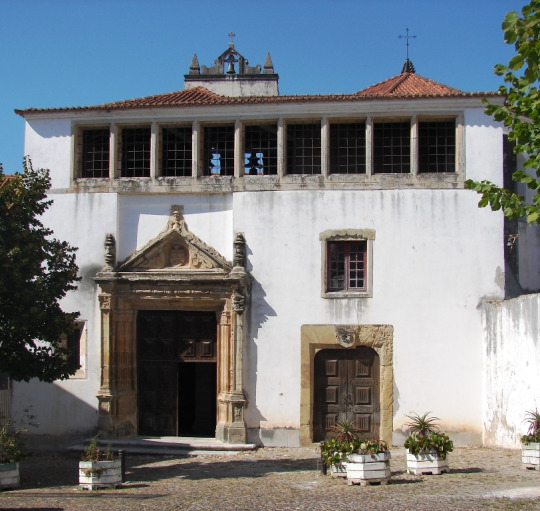
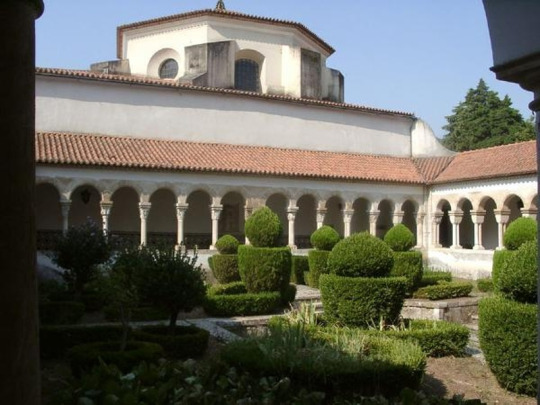
Her sister Teresa arranged for her burial at the Monastery of Lorvão.
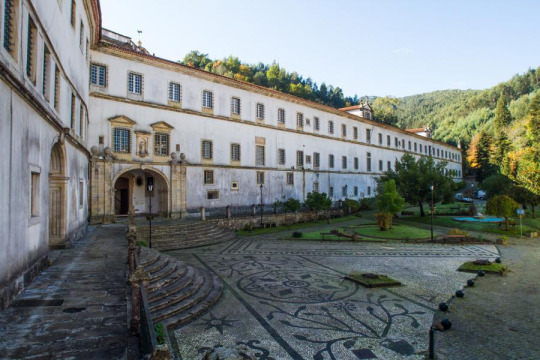
She was beatified by Pope Clement XI in 1705, the same year as Teresa;
Constança (May 1182 – before 1186 or August 1202). According to Rodrigues Oliveira, she must have died before 1186 since her name is not registered in any of the documents of the chancellery of Sancho I which begins in that year";However, the necrology of São Salvador de Moreira records the death "III Nonas Augusti" in 1202 of "Domna Constantia Infantula filia regis domni Sancii et reginæ domnæ Dulciæ".
Afonso (23 April 1186 – 25 March 1223), succeeded his father as the third king of Portugal;
Raimundo (1187/88 – 9 March bef. 1188/89), who died in infancy;
Pedro (23 February 1187 – 2 June 1258), spouse of Aurembiaix, countess of Urgell;
Fernando (24 March 1188 – 27 July 1233), count through his marriage to Joan, Countess of Flanders;
Henrique (aft. March 1189 – 8 Dec aft. 1189), who died during infancy;
Mafalda (1195/1196 – 1 May 1256), the wife of Henry I of Castile, was beatified in 1793;
Branca (1198 – 17 November 1240), probably the twin sister of Berengaria, was raised in the court with her father and his mistress "a Ribeirinha" and, when she was eight or ten years old, was sent to live with her sisters at the Monastery of Lorvão. She was a nun at a convent in Guadalajara and was buried at the same monastery as her mother;
Berengaria (1198 – 27 March 1221), probably the twin sister of Branca, married Valdemar II of Denmark in 1214.
With Maria Aires de Fornelos, daughter of Aires Nunes de Fornelos and Maior Pais, who was buried at the Monastery of Santo Tirso in accordance with her last will, Sancho had two children, both born before his marriage to Dulce of Aragon:
Martim Sanches (born before 1175) Count of Trastámara. Martim married Elo Pérez de Castro, daughter of Pedro Fernández de Castro, with no issue from this marriage;
Urraca Sanches (born before 1175), was married to Lourenço Soares, son of Soeiro Viegas and Sancha Bermúdez de Traba.
After Dulce's death, he had an affair with María Pais de Ribeira "a Ribeirinha" for whom he is often said to have written and dedicated a cantiga de amigo, A Ribeirinha, composed in 1199, the oldest text known in Portuguese poetry. That is contested nowadays by the Portuguese historian António de Resende Oliveira, who claims this cantiga was composed by Alfonso X of Castile or perhaps Sancho II of Portugal. At least six children were born of this relationship:
Rodrigo Sanches (died 1245), had a bastard son with Constança Afonso de Cambra called Afonso Rodrigues, a Franciscan friar and the "Guardian of the Convent of Lisbon";
Gil Sanches (died on 14 September 1236), a cleric and troubadour, his father left him 8,000 morabetinos in his will. Gil granted fueros to the settlers of Sardezas in 1213;
Nuno Sanches, he died in his childhood on a 16 of December in an unknown year. He could also have been the son of Maria Aires de Fornelos;
Maior Sanches, also died at an early age on 27 of August of an unknown year;
Teresa Sanches, her father left her 7,000 morabetinos in his will. She was the second wife of Afonso Téllez de Meneses whom she married before 1220 and with whom she had issue;
Constança Sanches (1204 – 8 August 1269). Her father left her 7,000 morabetinos in his will. She was the God-mother of her grand-niece, Infanta Sancha and left her half of Vila do Conde, Avelaneda, Pousadela, Parada and Maçãs. She also owned estates in Torres Vedras.
King Sancho also had one son with Maria Moniz de Ribeira, daughter of Munio Osorio, tenente of the comarca of Cabreira and Ribera,and of Maria Nunes of Grijó,:
Pedro Moniz, who married a woman whose name is not recorded, and was the father of Maria Peres de Cabreira, the wife of Martim Peres Machado, the first to use the last name Machado.
11 notes
·
View notes
Text
El Cantar de Sancho II en la Primera Crónica General
El Cantar de Sancho II en la Primera Crónica General
Un siglo después de la Crónica Najerense, la Primera Crónica General, mandada compilar por Alfonso X el Sabio, recoge los hechos legendarios de la vida de Sancho II centrándose en el cerco de Zamora y aportando numerosas novedades.
Por ejemplo, en esta versión el principal instigador de los hechos será su hermana doña Urraca y exculpa por completo a Sancho (que realmente había atacado a sus…
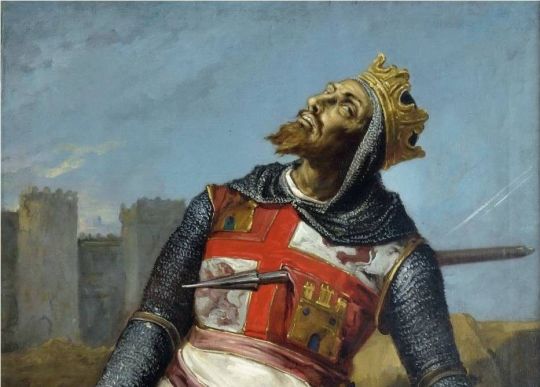
View On WordPress
0 notes
Text
Was chilling in bed and suddenly realised a thing. When anon asked me about TV show with canon incest recs, I completely forgot about El Cid!!! Shame on me. Everybody watch El Cid, its only flaw is that it's probably not getting season 3. Everything else is fantastic, especially siblings-in-love. I mean look at them 😍



32 notes
·
View notes
Text
COVARRUBIAS (Burgos) Covarrubias, pueblo situado en la Comarca del Arlanza en la provincia de Burgos, Presenta un casco urbano bien conservado, en el que destaca el Torreón de Fernán Gonzalez, la única fortaleza castellana anterior al siglo XI que se conserva, tiene la Colegiata de San Cosme y San Damian. Junto con las localidades de Lerma y Santo Domingo de Silos forman el llamado triángulo del Arlanza. Sus habitantes son conocidos como racheles y rachelas, proviene de Raquel, la esposa de Jacob, la localidad esta situada en la Ruta del Cid y también pasa el camino de Santiago, situada a unos 40 Km de Burgos, Declarada Conjunto Historico Artistico Nacional en 1965. Tiene la historia de la princesa Kristina de Noruega que se caso con el Infante Felipe hermano de Alfonso X el Sabio y que parece ser que murió de melancolía en Sevilla y su sepultura, un sepulcro gótico esta en Covarrubias en la Colegiata. Según cuenta la leyenda la Infanta Doña Urraca fue encerrada en la torre de La Emparedada por su propio padre Fernán Gonzalez, como castigo por sus amoríos con un pastor. Hasta mediados del siglo XVI Covarrubias estuvo completamente amurallada, de las cuales aun se conservan buena parte de ellas. La Colegiata tiene un museo con importantes retablos, (bien comentados por el guia, que no es otro que el párroco, que dicho sea de paso nos comento que en Burgos hay un bar que se llama el Vaticano, pero que el Papa no sirve copas), ¨cabreo del párroco¨ por el comentario de Ana, una compañera del grupo sobre la inauguración de la capilla de San Olaf ubicada a unos tres kilómetros de Covarrubias. Y os diré que tiene un mercado medieval a mediados de julio, donde acuden artesanos de toda España y se venden las famosas cerezas de la villa. Tiene ua bodega con un buen vino y excelente relación calidad/precio, que no es otra que Bodega COVARRUBIAS


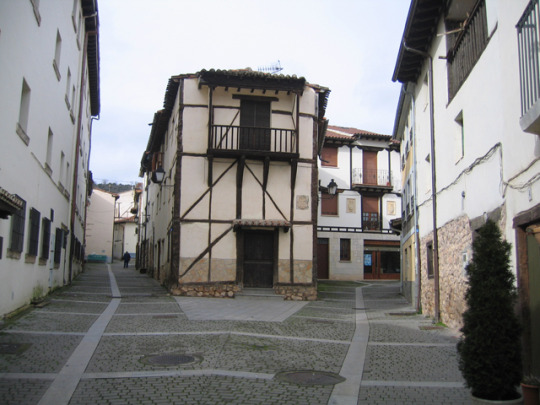
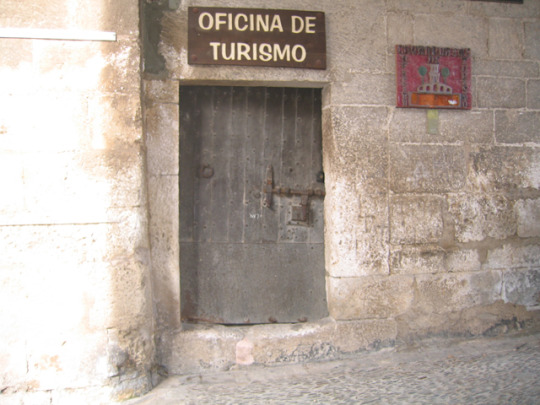
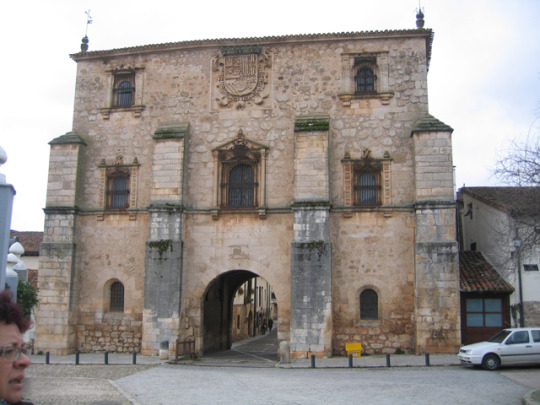
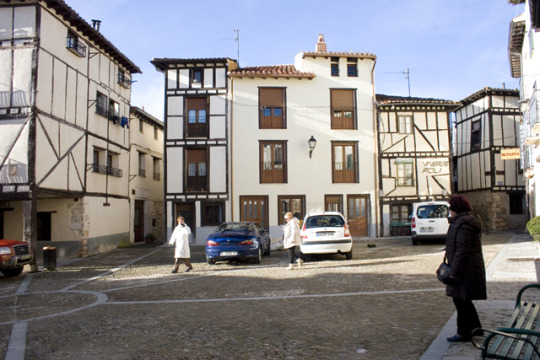




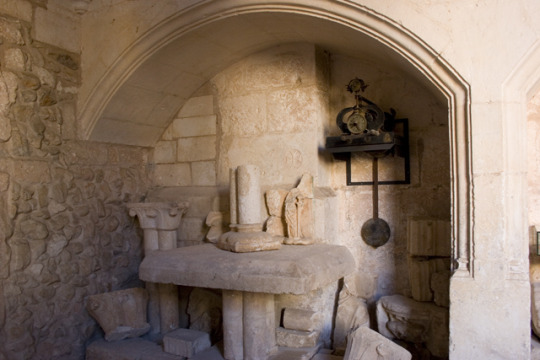



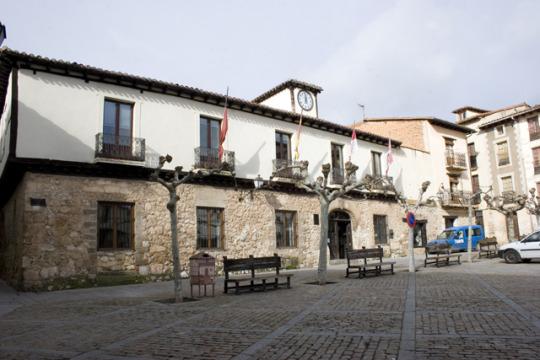
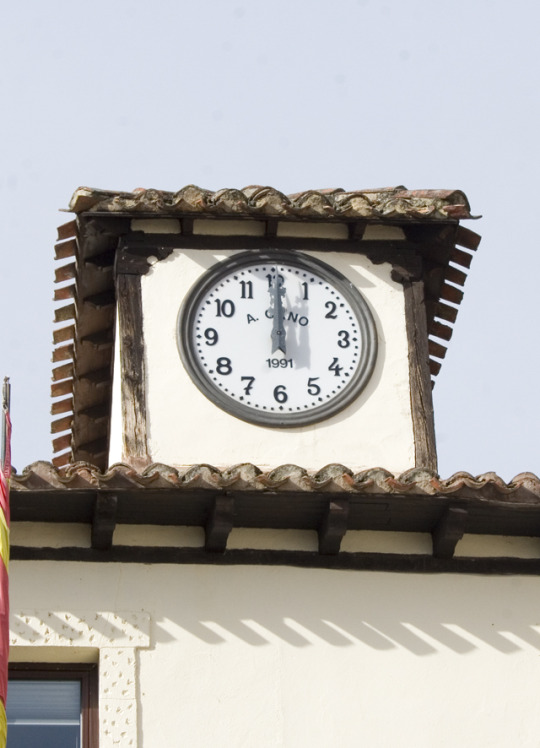
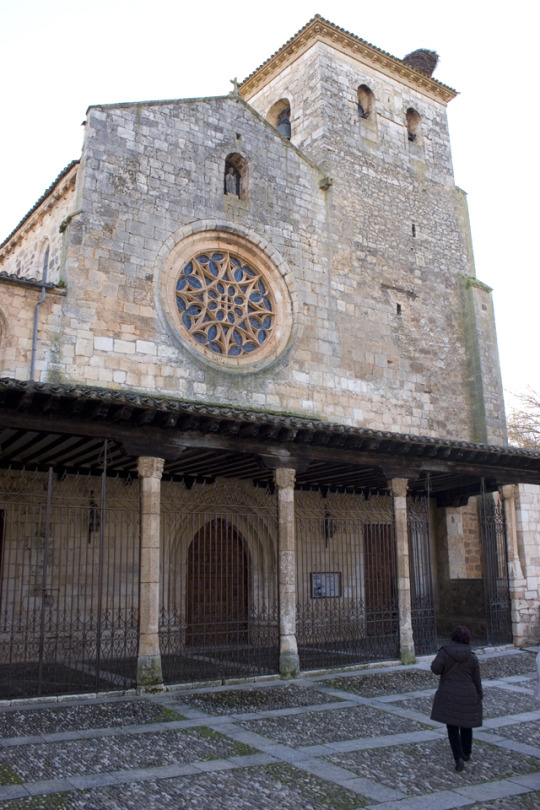


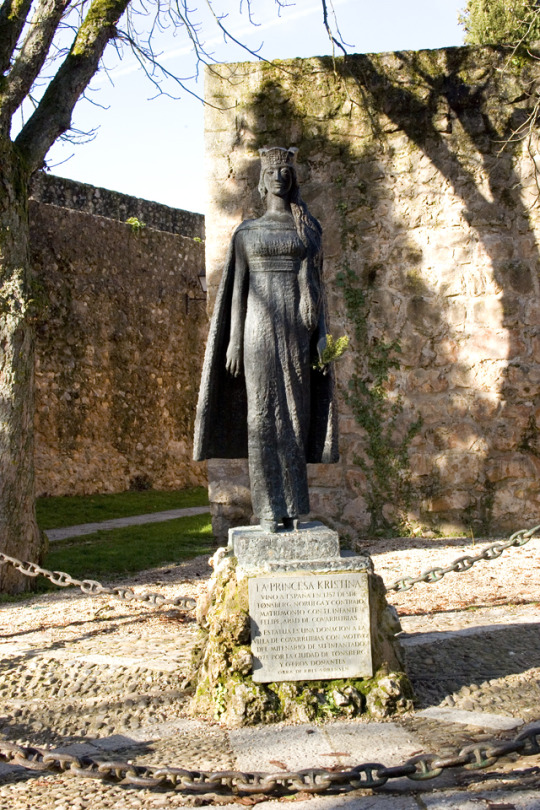




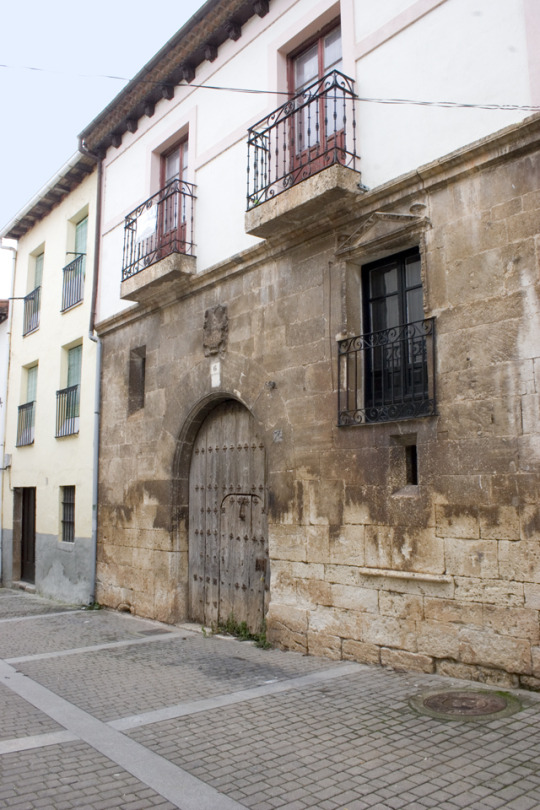

0 notes
Photo







Before Henry VIII, there were the six wives of Alfonso VI of Leon-Castile
1) Agnes of Aquitaine (c.1073-1077): Daughter of William VIII of Aquitaine. Alfonso’s first queen and presumably at his side during his period of exile and conflict with his brothers over their father’s kingdoms. She last appears alongside Alfonso in 1077, likely dying sometime after, though some sources claim she was repudiated. There was no issue from this marriage.
2) Jimena Muñoz (c.1077-c.1080): An Asturian noblewoman who became Alfonso’s concubine in the late 1170s/early 1180s. They had two daughters: Elvira, Countess of Toulouse, and Teresa, Countess/Queen of Portugal.
3) Constance of Burgundy (1079-1093): Daughter of Duke Robert I of Burgundy and granddaughter of Robert II of France. She held the longest tenure as queen and appears to have been the most politically active of Alfonso’s wives, especially noted for her role in promoting Cluniac monasticism and the Roman liturgical rite in León. The marriage may have produced several children, but only one, Urraca, would survive to adulthood and one day succeed her father.
4) Zaida (Isabel) of Sevilla (c.1091-1100): A Muslim princess, daughter-in-law to the taifa king, al-Mutamid of Sevilla and widow of Fath al-Mamun of Cordoba. She sought refuge in Alfonso’s court following the death of her husband and invasion of the Almoravids. She became Alfonso’s concubine and (possibly) later his wife, being baptized and taking the Christian name, Isabel. Zaida and one of Alfonso’s other listed queens, also named Isabel, could be one and the same. She gave birth to Alfonso’s only living son, Sancho, who was his father’s heir prior to his premature death. She may also be the mother of his daughters, Sancha, and Elvira, Queen of Sicily.
5) Berta of Savoy (1094-c.1099): Possibly the daughter of Count Amadeus II of Savoy. She died sometime between 1099 and 1100. There was no issue from this marriage.
6) Beatrice of Aquitaine (1108-1109): Possibly daughter of William VIII of Aquitaine, thus the sister of Agnes, Alfonso’s first wife. She also could have been of Burgundian origin.She would be widowed on the king’s death at the age of seventy and returned to her natal family.
Source x, x
#castile#leon#alfonso vi#medieval queens#medieval spain#eleventh century#six wives#but less beheading#notmygifs#el final del camino#zaida#vikings#sophia myles#alexandra dowling#isabel#constance of burgundy
109 notes
·
View notes
Text

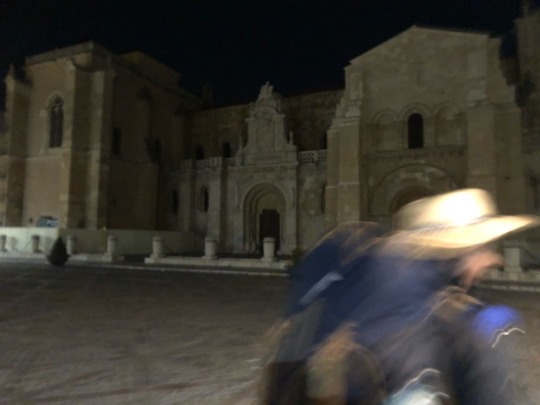
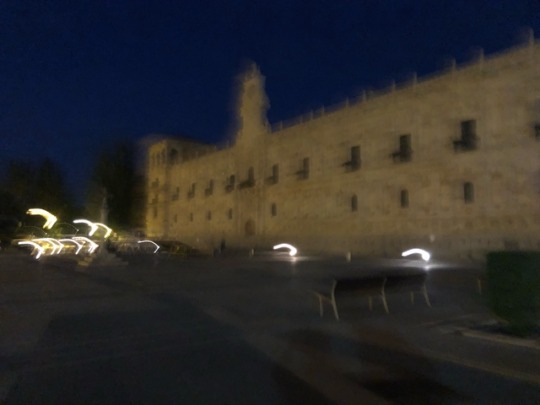
San Isidoro es considerado por muchos especialistas como una de las obras maestras del arte románico español. En el siglo X ya existía como iglesia de San Juan Bautista, reconstruida por Fernando I y doña Sancha en 1063. Más tarde, serían Alfonso VI y su hija doña Urraca los que llevaron a cabo la ampliaron hasta su estado actual. Se conservan los ábsides del siglo XI, los muros del crucero y la parte baja del interior del templo: el resto es del siglo XII.
Son muy importantes las dos portadas:
La principal o del Cordero comprende varias arquivoltas semicirculares, dintel quebrado y tímpano sobre mochetas que semejan cabezas de carnero.
La otra portada, llamada del Descendimiento, que se abre en el extremo sur del crucero, es de fecha más tardía; bajo las arquivoltas, el tímpano desarrolla las escenas de la Ascensión, el Descendimiento y las Marías en el sepulcro; a los lados figuran las imágenes de los apóstoles Pedro y Pablo.
*Esta información es de Eroski. Yo pasé de noche y la verdad no pudimos ver nada
0 notes
Photo


Urraca your thirst is showing 😉
#El Cid#urraca de zamora#Urraca#Alfonso#Urraca x Alfonso#my edit#Me too Urraca#me too#Urralfon#I guess#don't know their shipping name#but boy do I ship it
16 notes
·
View notes